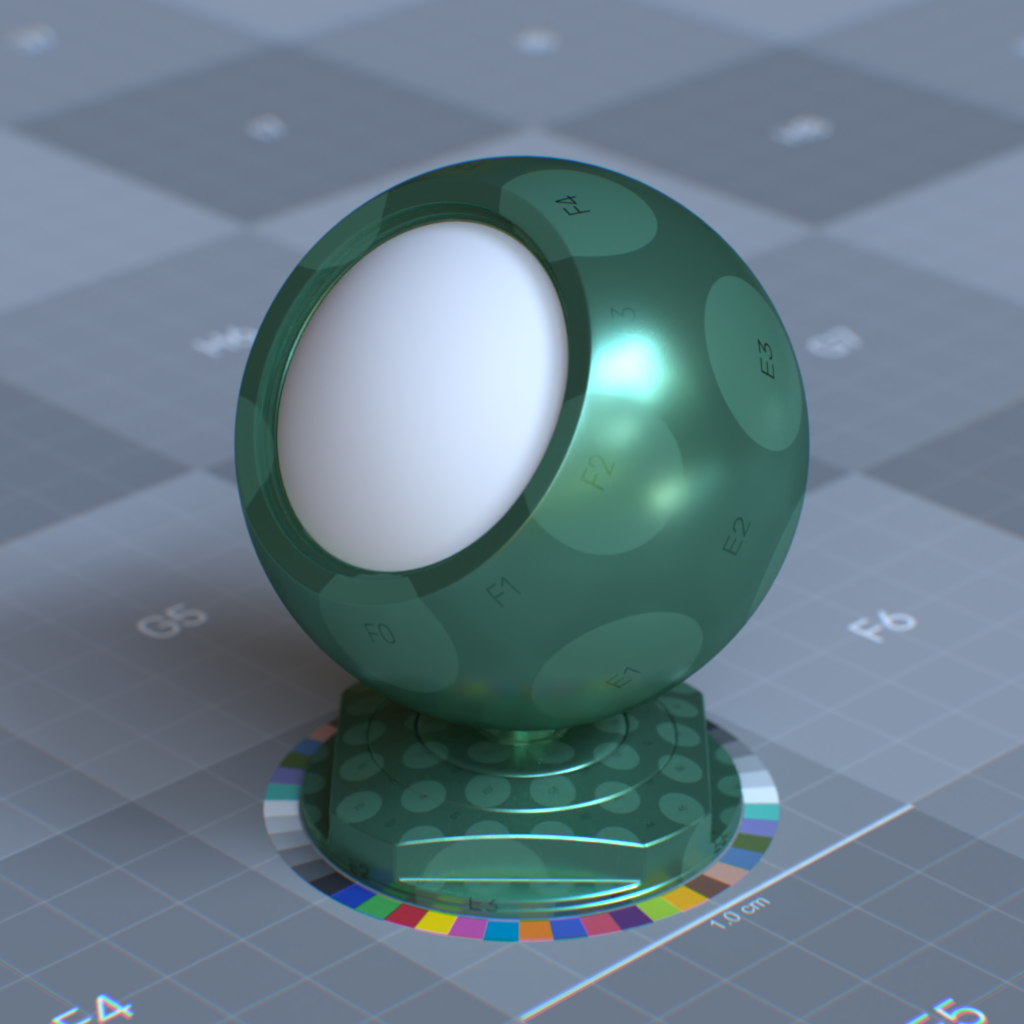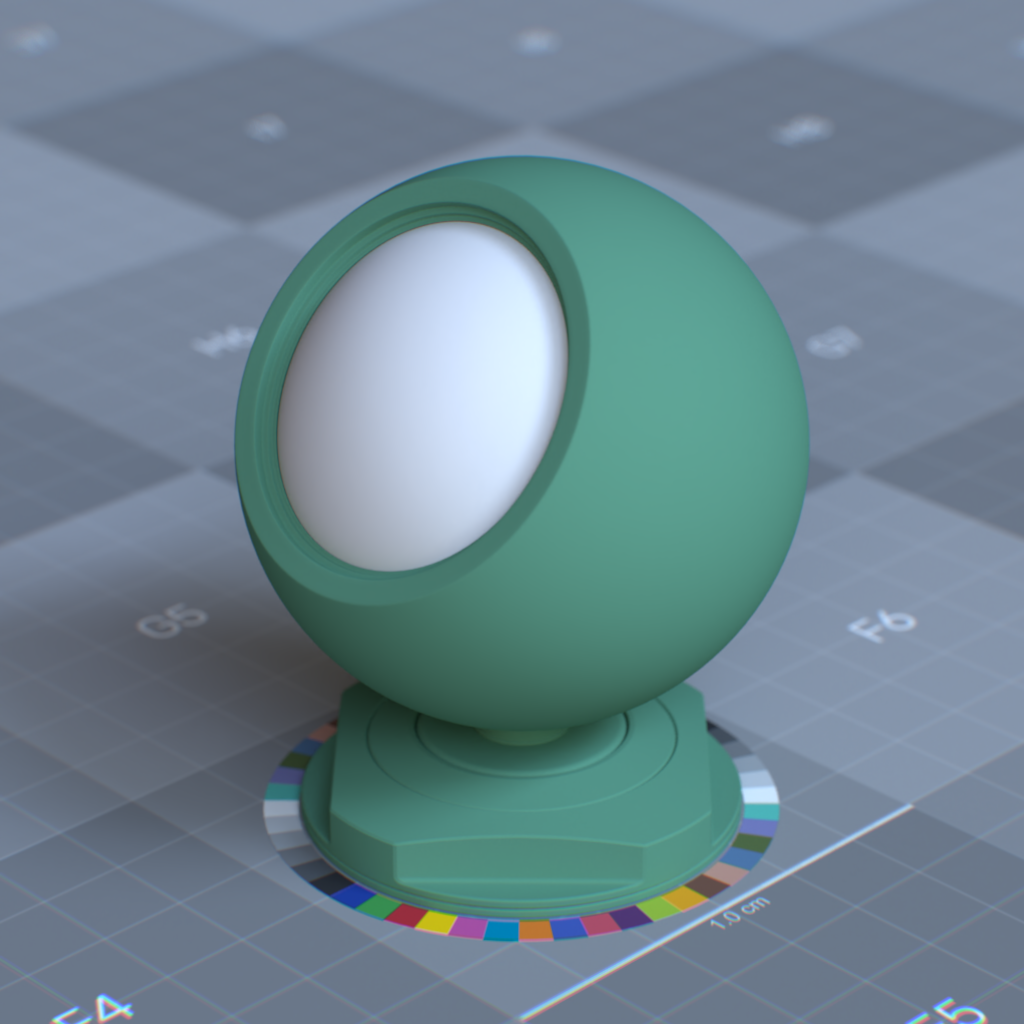Reflectivity#
- Specular reflection represents light that bounces directly off a material’s surface, creating mirror like reflections. The reflection’s intensity depends on:
Material Type: Metals reflect 60-100% of light, while non-metals (dielectrics) reflect 2-5%
Surface Roughness: Smooth surfaces create sharp reflections; rough surfaces create blurred reflections
Viewing Angle: Reflections become stronger at glancing angles (Fresnel effect)
Parameters
Display Name |
Name |
Type |
Default |
|---|---|---|---|
reflection_roughness_constant |
float |
0.5 |
|
reflection_roughness_texture_influence |
float |
0.0 |
|
reflectionroughness_texture |
asset |
||
metallic_constant |
float |
0.0 |
|
metallic_texture_influence |
float |
0.0 |
|
metallic_texture |
asset |
||
specular_level |
float |
0.5 |
|
enable_ORM_texture |
bool |
false |
|
ORM_texture |
asset |
||
Roughness Amount
Defines how rough or smooth a surface appears when viewed from any angle. A value of 0 creates perfect mirror-like reflections, while higher values (up to 1) create increasingly diffuse, blurred reflections. Unlike anisotropic roughness, this property affects light scattering uniformly in all directions.
- The range is as follows:
0 = Perfectly reflective surface
1 = No reflectivity

|

|

|
Roughness Map Influence
Mixes the Roughness Map power over the Roughness value.
- The range is as follows:
0 = Roughness Value
1 = Roughness Map

|

|

|
Roughness Map
Accepts a texture file to define roughness values.

|
Roughness Map Color Space
Valid Texture Gamma Values
raw : Use texture data as it was read from the texture and do not mark it as using a specific color space.
sRGB : Mark texture as sRGB when reading.
auto : Check for gamma/color space metadata in the texture file itself; if metadata is indicative of sRGB, mark texture as sRGB. If no relevant metadata is found, mark texture as sRGB if it is either 8-bit and has 3 channels or if it is 8-bit and has 4 channels. Otherwise, do not mark texture as sRGB and use texture data as it was read from the texture.
Metallic Amount
Metallic Amount
Determines if the surface is Dielectric (non-metallic) or Conductive (metallic).
- The range is as follows:
0 = Dielectric (non metalallic)
1 = Conductive (metallic)

|

|

|
Metallic Map Influence
Mixes the Metallic Map power over the Metallic amount.
- The range is as follows:
0 = Metallic Amount
1 = Metallic Map

|

|

|
Metallic Map
Enables the application of a texture map to define metallic areas on the surface.

|
Metallic Map Color Space
Valid Texture Gamma Values
raw : Use texture data as it was read from the texture and do not mark it as using a specific color space.
sRGB : Mark texture as sRGB when reading.
auto : Check for gamma/color space metadata in the texture file itself; if metadata is indicative of sRGB, mark texture as sRGB. If no relevant metadata is found, mark texture as sRGB if it is either 8-bit and has 3 channels or if it is 8-bit and has 4 channels. Otherwise, do not mark texture as sRGB and use texture data as it was read from the texture.
Specular
The specular reflectivity of the material.

|

|
Enable ORM Texture
- Allows use of a “packed” Occlusion, Roughness and Metallic map instead of separate maps for each. Each channel of the texture is used as follows:
Red: Occlusion
Green: Roughness
Blue: Metallic
ORM Map
“Packed” ORM map texture input.

|

|
ORM Map Color Space
Valid Texture Gamma Values
raw : Use texture data as it was read from the texture and do not mark it as using a specific color space.
sRGB : Mark texture as sRGB when reading.
auto : Check for gamma/color space metadata in the texture file itself; if metadata is indicative of sRGB, mark texture as sRGB. If no relevant metadata is found, mark texture as sRGB if it is either 8-bit and has 3 channels or if it is 8-bit and has 4 channels. Otherwise, do not mark texture as sRGB and use texture data as it was read from the texture.